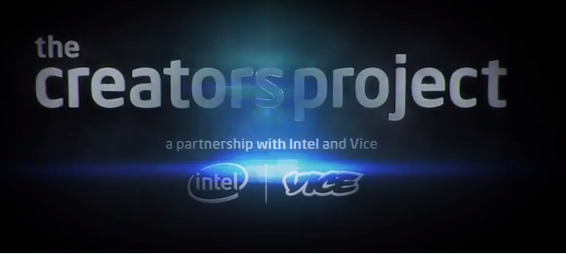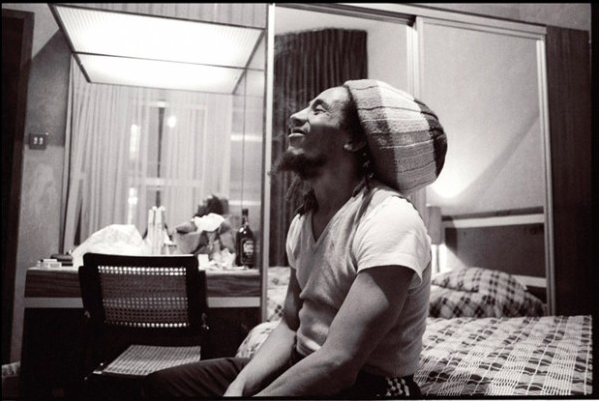Talk Like a Tech Brand
This is an article authored jointly with Nick Fell - Strategy Director at BBH London
From Art Game, by Leo Caillard
The Marketing World is in awe of tech brands.
It has visited the Valley, gathered at the Googleplex. It has listened to their leadership and consumed their case studies. It has invited them in for partnerships, hangouts and huddles. It has adopted their products, processes, principles and patter. It has acquired their interior design, appropriated their casual clobber.
But has the Marketing World learned how to talk like a tech brand? Is there an underlying assumption that tech brands can teach us how to behave, but not how to communicate? An ongoing suspicion that the engineer-led cultures of tech brands don’t quite ‘get’ communication?
We suspect the Marketing World has a long held, deep rooted belief that tech brands obsess too much about their own product and experiences; that they’re introverted.
Marketeers think tech brands may make cool products, but they’re not so hot on insights and benefits, emotions and humanity. The tech guys don’t understand empathy. And whilst tech brands revel in the complex, coded and arcane, they’re not schooled in single-mindedness and sacrifice. They don’t know how to drill down or ladder up. They may get big data, but they don’t get big ideas.
So, for all their many virtues, there’s not much the Tech World can teach the Marketing World about communication. Or so the conventional wisdom goes.
But conventional wisdom may actually be an albatross around our necks. This same wisdom tends to create a convergent mush of mood board marketing, a farrago of facile insights and shallow lifestyle posturing. Modern brands from all sectors would do well to look properly, not just at how tech brands behave, but at how they communicate.
Let’s consider a few themes.
1. Pride in product
Tech brands spend the vast majority of their time and energy in the pursuit of innovation; creating astounding products is their main obsession. There is always something new to say, whether it’s a big breakthrough or a modest upgrade. Which is why their communications are so firmly rooted in product truth.
This might be considered old-fashioned in a world of purpose-led brand building. But it provides a refreshing break from the pseudo-insights, hyperbole and overly-elaborate ideas which fill much of today’s communications landscape.
2. UX meets advertising
User experience has been defined as “the totality of an end-user's perceptions as they interact with a product or service” (Kuniavsky, 2010).
Tech brands employ user experience design to create products which we love to use, but the influence of UX is also clear to see in how tech brands talk.
Thinking in terms of “end-users”, not audiences, means the usability of the communication is given primary importance. The result is often a visual language which is clean, precise and with plenty of white space (more on the rise of “flat design” in Adam’s post here). Tech brands also use as few words as possible to meaningfully make the point. This type of communication is disruptive precisely because it respects our desire for space and time.
3. Narrative through product
Tech brands cannot rely exclusively on the elegant delivery of product truth to succeed.
As in all other categories, communications which evoke an emotional response help brands to create affinity and preference. However, tech brands do not treat emotional and rational approaches to communications as mutually-exclusive, like oil and water. Instead they intimately combine the two; using the product as a medium to weave rich and emotionally-engaging narratives.
For example, telling the story of a teenager building a media empire through interactions on a web browser in BBH’s Google Chrome campaign or showing a dramatic rescue through a GoPro camera attached to a fireman’s helmet.
4. Cultural collaboration
Conventionally, brands employ celebrities as a means to gain attention and credibility. These are often one-dimensional, transactional relationships.
Tech brands, on the other hand, enter into genuine partnerships with individual and institutional players in culture with the aim of creating something fresh and interesting for the world to explore. Google and Arcade Fire, Samsung and David Bailey and Intel and Vice are all examples of this.
In these relationships, both parties have a part to play; the cultural collaborator is the “cool kid” to the tech brand’s “geek” persona, bringing creativity and humanity to code and hardware.
When the most innovative tech brands work with the foremost tastemakers, the result can be an irresistible combination of science and art, left brain and right brain, intelligence and magic.
5. Built-in marketing
With the previous themes, we have considered the unique way in which tech brands talk in their marketing communications.
But tech brands are also highly skilled at building marketing directly into their products. When we use Facebook, Twitter, WhatsApp and SnapChat, we also promote them. For example, to access my friend’s pictures on WhatsApp, I have to download the app. This built-in network effect means that WhatsApp has grown to over 350m unique monthly users, with 400m photos being shared every day. All of this without any significant marketing investment.
So, let’s not just admire the Tech World’s innovative culture, agile processes and beautiful products. Let’s embrace their very particular perspective on communication. It’s a perspective that could perhaps lead us out of some of the cul de sacs of contemporary marketing. Whatever business we’re working with, in whatever sector, shouldn’t we all consider talking like a tech brand?
First published: BBH LABS 14/11/2013
No. 23















